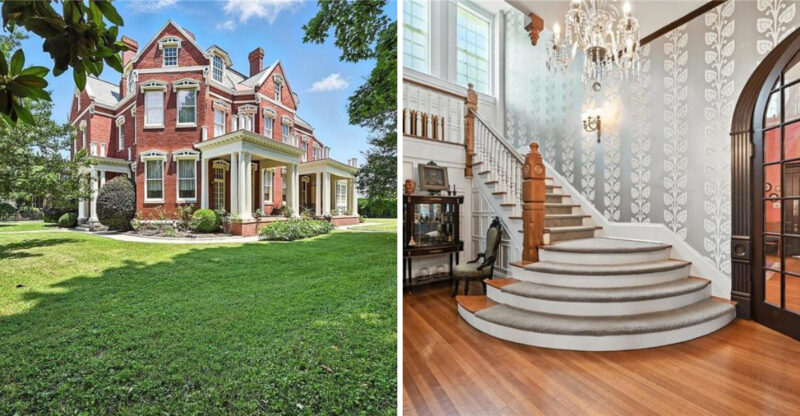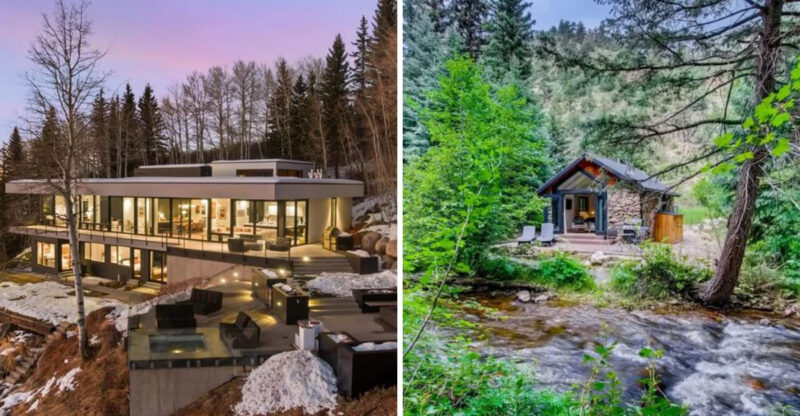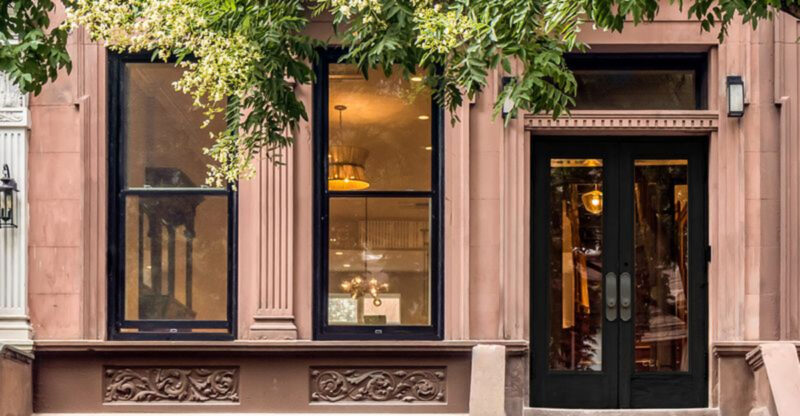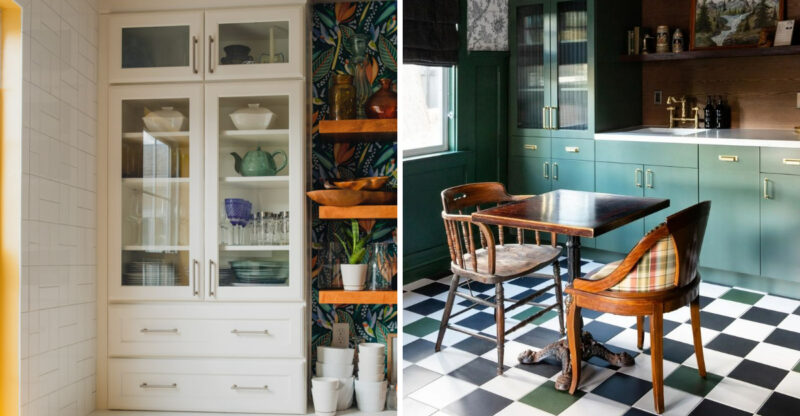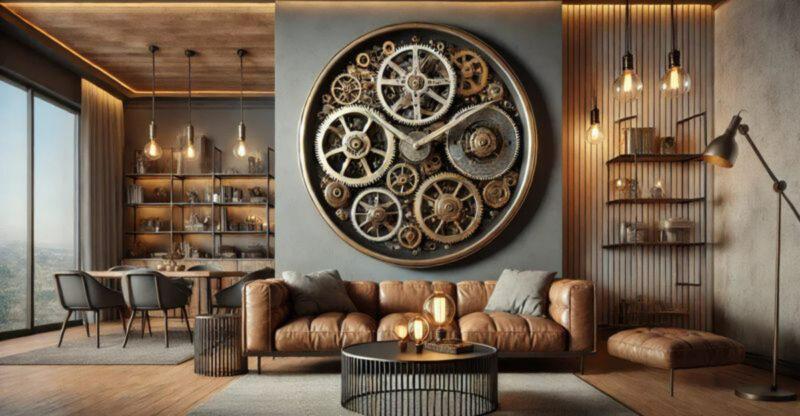Iconic Historic Mansions In South Carolina Worth Visiting
Have you ever wondered what life was like for the wealthy families who shaped South Carolina’s history? Walking through grand historic mansions gives you a peek into their fascinating world of elegant ballrooms, secret gardens, and stories that shaped America.
South Carolina has some of the most stunning old homes you’ll ever see, each with its own unique tale to tell. Get ready to explore the magnificent mansions that will transport you back in time!
1. Drayton Hall
Built in 1738, this place survived wars, earthquakes, and hurricanes without major changes. It’s one of America’s oldest unrestored plantation houses, showing you exactly how colonial families lived centuries ago. Walking through the rooms feels like stepping into a time machine.
The house never had electricity or plumbing added, keeping its original character intact. You’ll see hand-carved wooden details and beautiful plasterwork that craftsmen created almost 300 years ago.
Tours explain how both enslaved workers and wealthy owners shaped this property’s story.
2. Middleton Place
America’s oldest landscaped gardens surround this stunning estate that dates back to 1741. Ten enslaved workers spent a decade creating the breathtaking terraced gardens and butterfly-shaped lakes. The symmetry and beauty still amaze visitors today.
Only one original building survived the Civil War, but it’s been carefully preserved for you to explore. Craftspeople demonstrate colonial-era skills like blacksmithing and pottery-making throughout the property. Peacocks roam freely across the grounds, adding unexpected charm to your visit!
3. Boone Hall Plantation
That famous tree-lined driveway you’ve seen in movies? It’s real, and it’s here! The Avenue of Oaks stretches three-quarters of a mile, creating nature’s most dramatic entrance. This working plantation still grows crops just like it did centuries ago.
Nine original brick slave cabins remain standing, telling important stories about the people who lived and worked here. The main house was rebuilt in 1935 but captures the grandeur of antebellum architecture perfectly.
You can tour the house, gardens, and learn about Gullah culture during your visit.
4. Aiken-Rhett House
Unlike other restored mansions, this one shows you the unvarnished truth of the past. Original wallpaper peels from walls, and furniture sits exactly where families left it generations ago. It’s hauntingly beautiful and incredibly honest.
The slave quarters, kitchen, and workspaces remain largely unchanged, giving you rare insight into everyone’s daily life. Built in 1820, the house expanded over the decades as the family’s wealth grew.
Your self-guided audio tour lets you explore at your own pace while learning fascinating details.
5. Magnolia Plantation And Gardens
Founded in 1676, this is one of the oldest public gardens in America that you can still visit. Springtime transforms the property into an explosion of colorful azaleas and camellias that’ll take your breath away. The gardens were designed to look naturally beautiful rather than formally structured.
A romantic Victorian-style house replaced earlier structures that were destroyed during the Civil War. Explore the maze, cross bridges over the swamp, and spot alligators sunbathing near the water.
The Audubon Swamp Garden offers incredible wildlife viewing opportunities year-round.
6. Hampton-Preston Mansion
Right in Columbia’s heart stands this elegant 1818 mansion where powerful families once entertained important guests. General Wade Hampton and his descendants lived here during some of South Carolina’s most dramatic historical moments. The house witnessed both prosperity and war firsthand.
Beautifully restored rooms showcase fancy furniture, delicate china, and personal belongings from the 1800s. You’ll learn how the Civil War affected everyone living here, from wealthy owners to enslaved workers.
Guided tours bring the mansion’s colorful history to life with engaging stories.
7. Heyward-Washington House
George Washington slept here during his 1791 presidential tour, and that’s just the beginning of this house’s cool story! Built in 1772 by Thomas Heyward Jr., a signer of the Declaration of Independence, it’s packed with historical significance.
The house shows you how wealthy Charleston merchants lived during colonial times. Original Charleston-made furniture fills the rooms, including pieces crafted by local artisan Thomas Elfe.
The kitchen building and formal garden have been carefully recreated to match the 18th-century layout. Tours highlight both the family’s Revolutionary War contributions and daily life details.
8. Robert Mills House
Designed by the same architect who created the Washington Monument, this 1823 mansion showcases cutting-edge design for its era. Robert Mills incorporated innovative features like speaking tubes between floors and hidden storage spaces. It’s like seeing early American engineering genius in action!
The house served as a private home, Confederate treasury office, and church before becoming a museum. Elegant rooms display period furniture and decorative arts from South Carolina’s prosperous antebellum period.
Your visit includes exploring the beautiful boxwood gardens that complement the neoclassical architecture perfectly.
9. Nathaniel Russell House
Prepare to be amazed by the famous free-flying spiral staircase that seems to defy gravity! Built in 1808 by wealthy merchant Nathaniel Russell, this house represents Federal-style architecture at its finest. Every room features exquisite details that craftsmen spent years perfecting.
The geometric shapes and elegant proportions throughout the house reflect the period’s fascination with mathematical beauty. Restored gardens recreate the formal landscape that once surrounded the property.
Guides share stories about Russell’s international trade business and how the household operated with dozens of enslaved workers.
10. Joseph Manigault House
Architect Gabriel Manigault designed this stunning 1803 house for his brother, creating one of Charleston’s most sophisticated examples of Adam-style architecture. The gate temple entrance and curved stairs immediately catch your eye. It’s fancy without being over-the-top showy.
Inside, you’ll find intricate plasterwork, elegant mantels, and period furniture that showcase early 19th-century taste. The house demonstrates how successful rice planters displayed their wealth through architectural beauty.
Special exhibits rotate throughout the year, highlighting different aspects of Charleston’s decorative arts and social history.
11. Redcliffe Plantation
Named for the red clay that colors the surrounding landscape, this 1859 mansion belonged to Governor James Henry Hammond. The house sits on land that Native Americans once inhabited, adding layers of history to your visit. Towering magnolia trees and boxwood gardens create a peaceful atmosphere.
Hammond’s personal library and family furnishings remain inside, offering intimate glimpses into 19th-century plantation life. The property includes outbuildings where enslaved people worked and lived, providing important historical context.
Educational programs help visitors understand the complex, often difficult stories connected to this place.
12. Woodrow Wilson Family Home
Our 28th president spent his teenage years in this 1872 Victorian home, and you can see where he studied and dreamed about his future. The Wilson family moved here after the Civil War when Columbia was rebuilding from wartime destruction. Original family belongings and furniture fill the rooms.
The house showcases typical middle-class life during Reconstruction, contrasting with grander plantation estates. You’ll learn about young Woodrow’s education and how his experiences in South Carolina shaped his later political views.
The garden features plants popular during the Victorian era, adding authentic period charm.
13. Rose Hill Plantation
Governor William Gist, South Carolina’s secession governor, called this 1832 Federal-style mansion home. His decisions here helped trigger the Civil War, making this property historically significant beyond its architectural beauty.
The name comes from the wild Cherokee roses that once covered the property. Restored rooms display period furnishings and personal items belonging to the Gist family across generations.
The grounds include reconstructed outbuildings that help you understand how the plantation operated. Interpretive programs explore the complex legacy of secession and how it affected everyone in South Carolina.
14. Seibels House
Built in 1796 and extensively remodeled in the 1850s, this house survived Sherman’s burning of Columbia through sheer luck. The Victorian-era updates created the elaborate decorative style you see today. It’s like two different architectural periods merged into one fascinating building.
The Columbia Museum of Art operates the house, showcasing decorative arts and period rooms from the 1800s. Original family photographs and documents help tell the story of Columbia’s development through different eras.
The house demonstrates how tastes changed and families adapted their homes over generations.
15. Kaminski House Museum
Overlooking the Sampit River in Georgetown, this 1769 house has witnessed centuries of coastal Carolina history. The Kaminski family’s impressive antique collection fills every room with treasures from around the world. You’ll see everything from rare clocks to exquisite furniture pieces.
The house’s architecture reflects multiple periods as different owners modified and expanded it over time. Georgetown’s importance as a colonial port comes alive through stories about the families who lived here.
Beautiful gardens and river views make this mansion especially memorable and picturesque to explore.
16. Verdier House
This 1805 Beaufort mansion served as Union headquarters during the Civil War after the town’s white residents fled. The Verdier family made their fortune in sea island cotton before the war changed everything. Its waterfront location offers stunning views that haven’t changed much in two centuries.
Period furnishings and exhibits explain Beaufort’s unique role during the war and Reconstruction. The house demonstrates Federal-style architecture adapted to South Carolina’s hot, humid climate with tall ceilings and double porches.
Knowledgeable guides share stories about both the wealthy merchants and the people they enslaved.
17. Mann-Simons Site
Celia Mann bought her freedom and this property in the 1840s, building a remarkable life as a successful midwife. Her story represents thousands of free Black people who built communities despite facing enormous obstacles. This site honors their often-overlooked contributions to South Carolina’s history.
The house stayed in Celia’s family for four generations, preserving their personal belongings and stories. You’ll learn about African American life in Columbia from slavery through the Civil Rights era.
The museum offers a perspective rarely seen in traditional plantation tours, making it incredibly valuable.
18. Walnut Grove Plantation
This upcountry plantation shows you how middle-class families lived during the Revolutionary War era. Built around 1765, the house is smaller and simpler than coastal mansions but equally fascinating. Original outbuildings include a kitchen, barn, and doctor’s office that create a complete historical picture.
The Moore family supported the Patriot cause, and their home witnessed important backcountry events during the Revolution. Period demonstrations show colonial-era skills like weaving, cooking, and farming.
The site helps you understand how ordinary families, not just wealthy planters, shaped South Carolina’s development.
19. Millford Plantation
Massive columns and perfect symmetry make this 1841 Greek Revival mansion absolutely breathtaking. Architect Russell Warren designed it as the ultimate expression of antebellum Southern grandeur. The house looks like something straight out of a classic Southern movie!
Manning family descendants owned the property until 1902, and it’s been carefully preserved since then. Guided tours reveal how the wealthiest rice planters lived at the height of plantation society.
The Classical Revival architecture influenced other grand homes throughout South Carolina, making Millford architecturally important beyond its individual beauty and historical significance.

